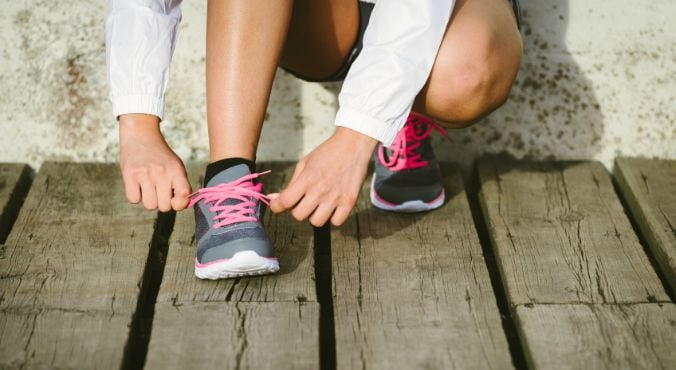
Image: iStock.
Here’s a quick question: how do you shop for exercise shoes? Do you carefully assess a style to ensure it’s suitable for the workouts you do… or do you just stroll into the store (or, um, website) grab the most affordable/trendy model and hot-foot it out of there?
Don’t worry, a lot of us take that approach. However, according to the Director of Vision Personal Training, Laura Moore, it’s not necessarily a case of ‘one shoe fits all workouts’ — the support and design of sports shoes can vary quite significantly when they’re intended for different kinds of exercise.
RELATED: This is what your favourite shoes are doing to your feet.
For instance, running shoes require a lot of support from hard surfaces and terrains, while the best shoes for activities like boxing are closer to the ground. So depending on your workout regimen, you might need to investigate what your feet really need — or you could risk hurting them.
“I think people don’t realise the outcomes of wearing the wrong shoe can be quite serious … They might start to feel a niggle in their knee and just think, ‘Oh, I must have done something to my knee’ but it could be because their shoe isn’t offering the right support,” Moore explains. (Post continues after gallery.)
Our favourite Running Duds printed shorts
There are a few tell-tale signs of ill-fitting shoes; Moore says blisters, aching in the arch of your foot and any noticeable discomfort in the points of direct contact, such as your heels and the balls of your feet, can all be an indication.
What makes things more complicated is that even for the same activity, two different people can require slightly different styles depending on factors like their arches and their gait.

Top Comments
after reading this post, choosing the right shoes can be easy for everyone...